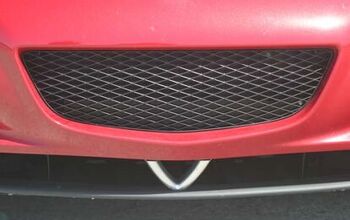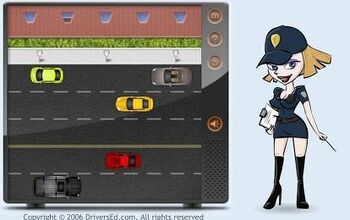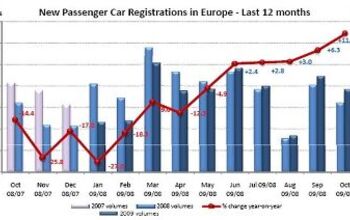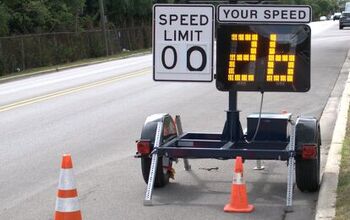Study Claims Odometer Rollbacks Are Making a Comeback


The latest research from Carfax has led the company to report that more than 1.9 million vehicles on the road have rolled-back odometers – noting that this represents a 7 percent increase against the previous year.
“Many people think odometer fraud disappeared with the invention of digital odometers,” stated Emilie Voss, Public Relations Director for Carfax. “But that couldn’t be further from the truth. We’re still seeing the number of vehicles on the road with a rolled-back odometer rise year-over-year.”
Though it’s hard to do a comparison against the glory days (for lack of a better term) of odometer tampering. Automotive aficionado Jay Leno often publicly reminisces about being tasked with rolling back the mileage of cars as one of his very first jobs, jokingly calling it the "odometer re-calibration department" and noting that it was just easier to crack open the dashboard to get your hands on the counter before computers became a factor. But that presumes that the tradition was more rampant then than it is today, something Carfax claims is not the case.
The company believes “it’s never been easier – or cheaper – to remove thousands of miles from a car’s history in one fell swoop” and cited modern technology as giving dishonest sellers more opportunities.
“It takes con artists a matter of minutes to wipe thousands and thousands of miles off a vehicle’s odometer,” said Voss, “and unfortunately these swindlers likely see this unprecedented used car market as a way to make a quick buck.”
Carfax stated that, while even a small adjustment can impact the value of any given automobile by a meaningful amount, most rollback events typically set the vehicle back by tens of thousands of miles. Based on the data used to compile the report, the group estimated that the average consumer loses around $4,000 in value on their purchase – and that’s before we get into the possible repair costs incurred by having a vehicle that’s further down the maintenance schedule than the owner realized.
The National Highway Traffic Safety Administration (NHTSA) also believes that malicious rollbacks are on the rise and estimates that over 450,000 vehicles are sold each year with false odometer readings. This has resulted in consumers being defrauded by roughly $1 billion annually.
Considering the current state of society, it’s getting difficult to believe odometer tampering isn’t a given on secondhand automobiles. We’ve already seen dealers leveraging supply shortages into obscene markups that are padding their bottom line. Energy companies have done the same with fuel prices, with record profitability being the only real consequence. Though, if you think oil concerns are somehow worse than the green menace, let’s not forget just how many electric vehicle startups appear to have turned out to be little more than a convenient way for their founders to launder money. And, boy, do we have some bad news about how efficiently your tax dollars are being spent.
Frankly, I would recommend assuming that literally every interaction one might make could be grounds for a scam. In fact, you’re actually being scammed into believing that you should be more generally skeptical right now. But the truth of the matter is that there’s a very good chance that not all of the alleged odometer tampering was intentional.
Carfax acquires its information from an array of motor vehicle bureaus across the United States and Canada, service centers, repair shops, insurance agencies, rental companies, state inspection sites, fire departments, law enforcement, and even the manufacturers themselves. While this provides a lot of unique data points and useful information, it also leaves room for blind spots and a pretty broad margin for error. Ultimately, the data contained within a Carfax vehicle report is only going to be as good as the documentation it was originally sourced from.
Rounding a vehicle’s mileage is extremely common among repair shops, service centers, and even government agencies. So discrepancies on Carfax vehicle reports aren’t all that rare. If you had back-to-back servicing events where one technician rounded up to 67,000 miles and the next person used the precise mileage just a few days later, it could signal as a rollback event on your vehicle history report. These are things Carfax actively tracks, though it doesn’t guarantee odometer readings as wholly accurate.
But the fact that the company’s vehicle reports often come with blind spots doesn’t change the fact that you probably should be wary of any mileage claims that seem too good to be true. Carfax recommends taking a vehicle in for an inspection to see if the wear on key parts actually matches the number displayed on the dashboard. For example, if the vehicle has some fouled spark plugs or transmission fluid that looks like it’s long overdue for a change, then there’s a good chance that it’s not really a 40,000-mile car. Those are things you could even inspect for yourself, with your mechanic able to check the wear of parts that would be far harder for you to access.
Carfax also recommended using some of its tools (by inputting the VIN) to determine the likelihood of tampering because it’s running a business and didn’t release this study solely for the good of mankind. Though vehicle history reports aren’t a bad thing to ask for and can be a useful item to have at your disposal, even if some of the information runs the risk of being inaccurate.
The NHTSA has some additional tips as well, starting with asking to see the title to see how it compares with the information being displayed by the vehicle. Up-to-date inspection records would also help solve any mysteries about the vehicle’s former life that you might have and it’s similarly worth looking at the inside of the vehicle to check the condition of the steering wheel, pedals, or any other part of the vehicle that comes into routine contact with the driver. However, if you suspect odometer fraud may be at play, the NHTSA doesn’t recommend using it to negotiate for a lower price. Instead, it suggests contacting the relevant enforcement agency in your state.
[Image: JASON TENCH/Shutterstock]
Become a TTAC insider. Get the latest news, features, TTAC takes, and everything else that gets to the truth about cars first by subscribing to our newsletter.
Latest Car Reviews
Read moreLatest Product Reviews
Read moreRecent Comments
- Jagboi The Canadian Mark VI's had the "Electronic fuel injection" badge on the side, but had the Ford Variable Venturi carb. The Canadian brochure for these cars does not have the portion about EFI that the US brochures have. A bit of false advertising for sure.I've seen a number of these cars up to 1983 and none of the Canadian market cars had EFI. The US cars had a crank triggered ignition systenm, the Canadian cars had the Duraspark just like the carbed Ford and Mercury Panthers.
- Syke Back when BMW actually made ultimate driving machines.
- Alan Many Ford designs that are manufactured in China are designed in Australia. Ford just fired hundreds of engineers. That only leaves engineers to keep on designing the Rangers, Bronco, etc.
- Alan Big Al,Seems the author has confused horsepower and kilowatts. Check out what the Aussie Ranger Raptor power output is.The VW Amarok is the 2.3 Eco Boost, I think its about what the author wrote.To be fair, the author may be quoting EU hp.
- Paul Alexander Is TTAC okay? Where are the other articles? Where are the other comments?
















![Ray Wert Checks In [podcast]](https://cdn-fastly.thetruthaboutcars.com/media/2022/06/28/8377169/ray-wert-checks-in-podcast.jpg?size=350x220)















Comments
Join the conversation
Take a look at the key fob(s) that comes with the car. Most folks stick with the first and will show wear & tear from being dropped multiple times like mine. The second will sit in a tray in the bedroom or in a cabinet. If they only offer one key fob and its spotless, I would be leery.
Also, Carfax is helpful, but not fool proof. I'm in the market for a replacement, and I've seen reports with with significant milage variations, yet, were not flagged on the header page of the report. Some are key punch errors; some VIN # screw ups; but some made me pass on the vehicle in question.
A completely different issue are the flood cars from Florida. Many, many vehicles took the drink in the recent hurricanes. Any car with a Florida history I will pass on for the next few years!!
This is a good article. I can tell you for fact this was happening in the 00s on 90s and early 00s electronic odometers but it was probably 1% or less of all cars because dealer tools were required to interact with the ECU. Today its probably still a rarity but likely up a few pips and easily seen if mileage is tracked in registration or dealer servicing and its 40K less than it should be (worst case, a few thousand miles at a time which is not worth a Federal charge). Title washing and TMU are much more likely.